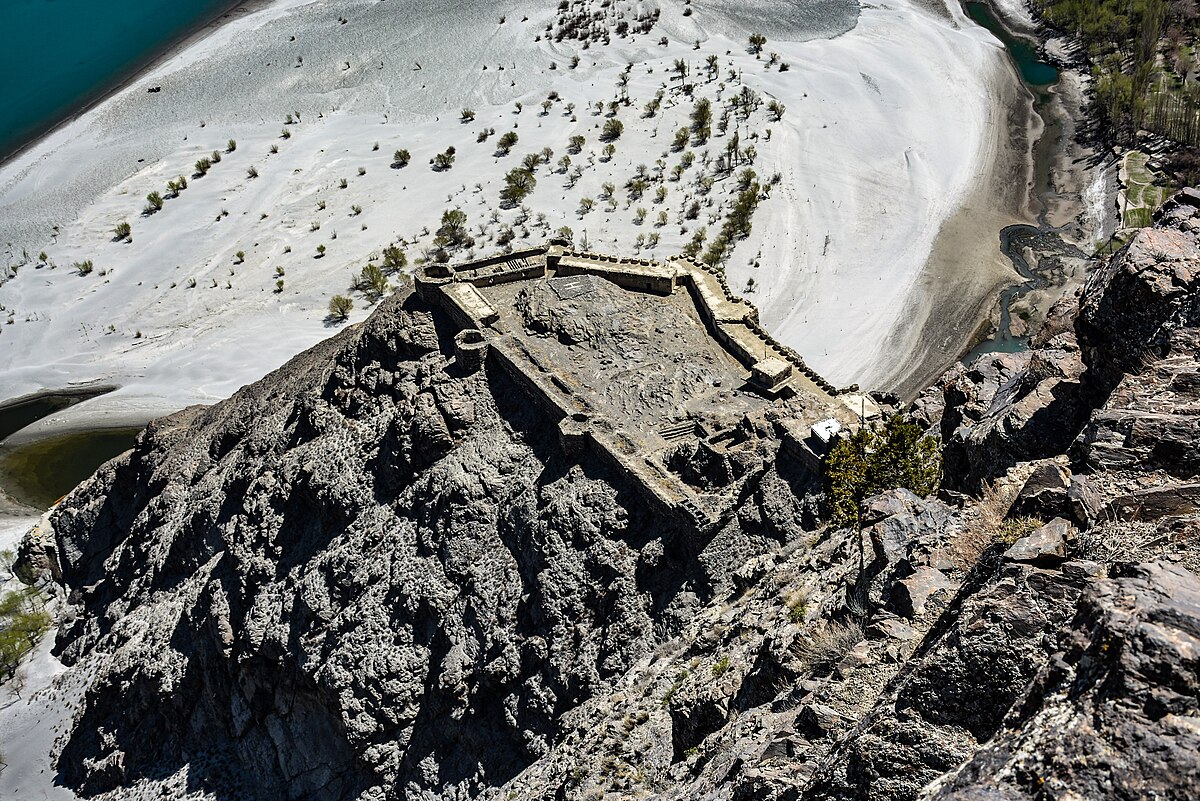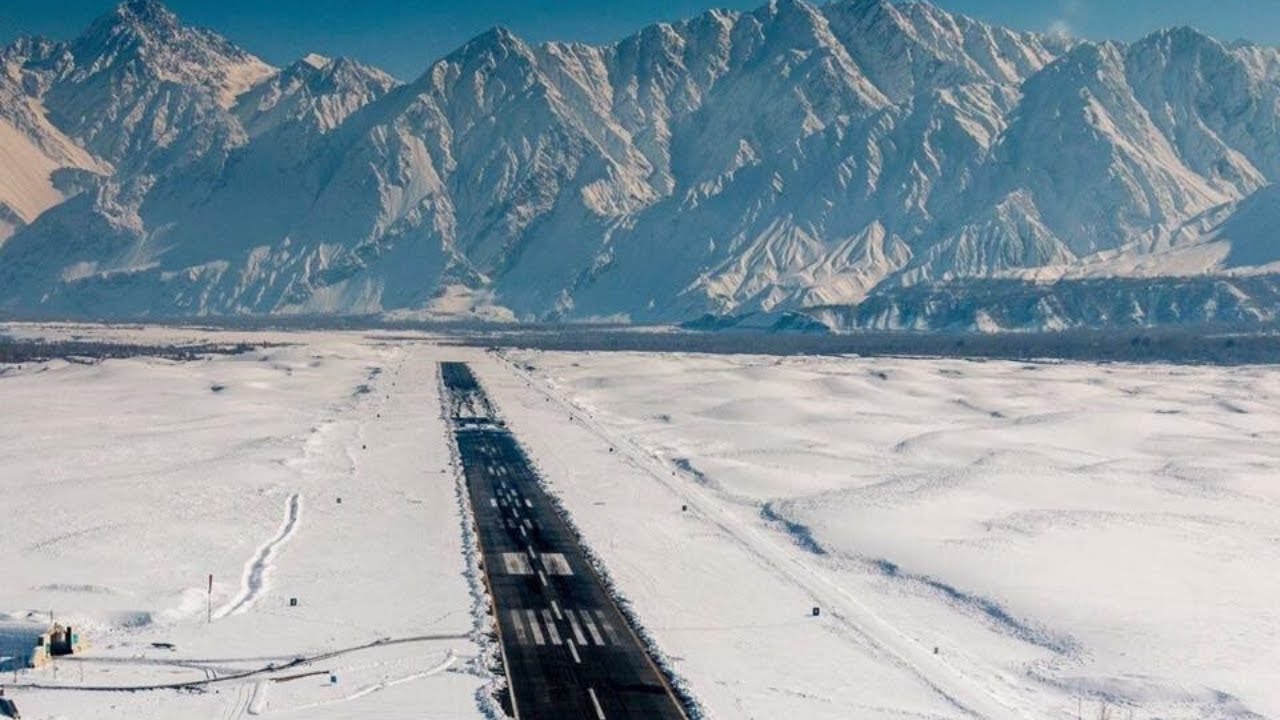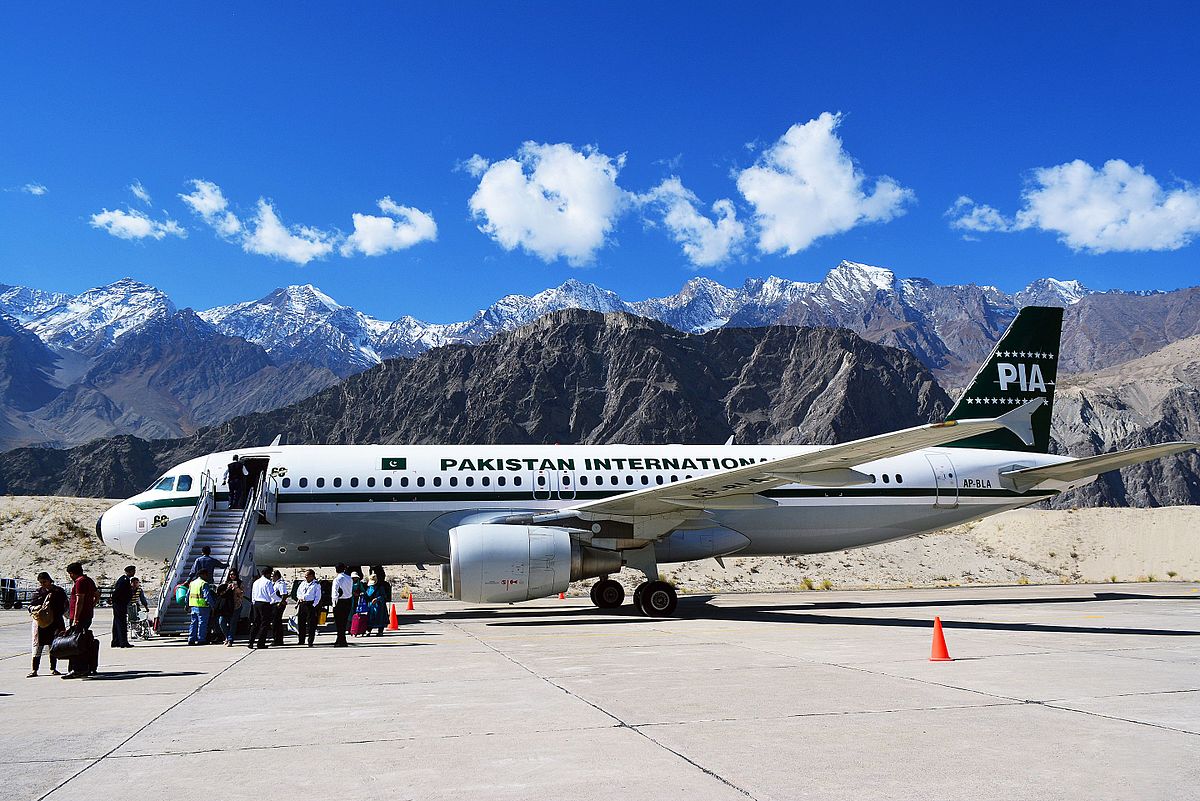If you’ve ever made your way to Skardu—or even just dreamed about coming here—you might have heard our local name for the fort that watches over our valley: Kharphocho, literally meaning “King of Forts” in Balti. I’ve lived in this region my whole life, and even today in 2025, Skardu Fort never fails to captivate me. It stands perched on a rugged hill, silently narrating stories of valor, trade, and the fascinating heritage of Gilgit-Baltistan.
Let me take you on a journey through everything you need to know about Skardu Fort: from its earliest history to the best time to visit, from local legends to modern improvements that have made Skardu much more accessible. Whether you’re a history buff, an adventure seeker, or someone who simply loves immersing themselves in a new culture, Skardu Fort offers something special for everyone.
1. A First Look at Skardu in 2025
A Growing Tourism Hub
Back in the day, Skardu was considered a remote destination, with only the bravest (and sometimes craziest) adventurers trekking through winding roads to come here. But things have changed significantly over the last few years. By 2023, the local government upgraded Skardu Airport to handle international flights, and by 2025, it’s fully operational. You can now fly in from major cities in Pakistan, the Middle East, and even some parts of Asia, reducing travel time and making it easier for tourists to explore our mountainous paradise.
Balancing Development and Tradition
As tourism flourishes, there have been big strides in building better roads and hotels. You can find eco-lodges, boutique guesthouses, and well-known hotel chains—something I never imagined growing up. But what makes Skardu truly unique is that despite all these modern comforts, our traditions hold strong. You’ll still see locals dressed in our Balti attire, hear the Balti language in the streets, and taste authentic local dishes like qurban (a stew often cooked with yak or goat) in our family-run restaurants.
2. The Fort’s Origins: Standing the Test of Time
Roots in Baltistan’s Maqpon Dynasty
To understand Skardu Fort, we must step back into history. While the exact date of construction remains debated among historians, the fort’s most prominent era was under the Maqpon Dynasty, which ruled Baltistan for nearly 700 years. Some scholars suggest the earliest structures of Skardu Fort could date back to around the 8th century, but there’s stronger evidence placing much of the fort’s construction between the 14th and 16th centuries.
Under the Maqpon rulers, Baltistan flourished as a key stop along the ancient Silk Route. Goods, ideas, and even religions passed through these valleys, enriching our culture. Skardu Fort served as both a defensive stronghold and a seat of power, protecting trade routes and signifying the Maqpon family’s influence.
The Name Kharphocho
In Balti, “Kharphocho” translates to “King of Forts” or “The Great Fort.” The name itself signifies its imposing status. When you stand at the fort’s main gate, you’ll sense why it earned this title: you’re literally on top of the town, gazing over the Indus River and surrounding peaks. The strategic advantage of having a fort on this high perch can’t be understated—it offered maximum visibility, making it a nearly impregnable stronghold for centuries.
3. Architecture: A Blend of Strength and Simplicity
Natural Defensive Position
If you’re into architecture and engineering—even just a little—you’ll love exploring Skardu Fort. What makes it so special is how the builders used the natural landscape. The fort melds into a steep cliff that towers over Skardu, meaning attackers had only one narrow and treacherous path to approach. Locally sourced stone, wood, and a special clay-based mortar were used in the walls, and many of these materials have withstood the region’s extreme climates for centuries.
Inner Layout and Royal Quarters
Within the fort, you can still make out the remains of old courtyards and what used to be royal living quarters. Imagine how bustling these spaces once were, filled with court officials, royal guards, and visiting dignitaries. Wooden beams carved with traditional Balti motifs still survive in some sections. While the fortress’s primary role was defense, these finer details remind us that it was also a home for royalty—a place where music, feasting, and official ceremonies played out against the backdrop of the Karakoram mountains.
4. Legends and Local Folklore
Tales of Hidden Treasures
Growing up, I used to hear tales of hidden treasure tucked away in secret chambers within the fort. Some villagers still claim there’s gold or precious gems protected by djinn (supernatural beings). While there’s no historical record confirming such a hoard, these stories are alive and well in local folklore, adding a sense of intrigue that might just have you looking behind every door and under every loose stone.
The Balti Queen’s Bravery
Another popular legend involves a Balti queen who once led a heroic defense of the fort against invaders. We often celebrate her story to highlight the courage and resilience of Balti women. Although the precise historical context isn’t always clear, it’s a story that shows how deeply Skardu Fort is ingrained in our sense of cultural pride.
5. Restoration Efforts: Bringing the Past into the Present
Early Conservation Endeavors
By the time I was a teenager, Skardu Fort was in dire need of attention. Decades of neglect and extreme weather had damaged walls and wooden structures. Thankfully, the government and local heritage organizations began patching things up. These early efforts mainly involved reinforcing vulnerable sections and preventing further collapse.
Modern Revamps (2015–2025)
Since 2015, restoration has taken on a new urgency and sophistication. Teams of architects, historians, and local artisans have been working together, supported by international conservation grants. In fact, if you come in 2025, you’ll see that parts of the fort have been restored using 3D mapping and drone imaging, which help pinpoint structural weaknesses.
This digital approach also benefits future conservation work. Every carved beam or hidden alcove is meticulously documented, creating a digital blueprint for upcoming generations to learn from and maintain. There’s even a virtual tour option now for educational institutions worldwide, enabling students to “walk” through Skardu Fort without leaving their classrooms.
6. Visiting Skardu Fort: Practical Tips for 2025
Best Time of Year
Baltistan experiences harsh winters, with heavy snowfall that can make travel difficult. If you ask any local, they’ll tell you the ideal time to visit Skardu Fort is between April and October. During the summer months (June, July, and August), the days are long and mild, although occasional monsoon rain may occur. Autumn (September to early November) is personally my favorite season, as the skies are usually clear and the turning leaves add bursts of color to the valley.
Getting There
- By Air: With Skardu Airport now offering international flights, you can arrive directly from major cities like Islamabad, Dubai, or Karachi (depending on seasonal routes). Flight schedules change regularly, so checking ahead is crucial.
- By Road: Many adventurers still prefer the road trip via the Karakoram Highway (KKH). The journey can take anywhere from 18 to 24 hours from Islamabad, but the panoramic views along the route are worth it if you have the time and patience.
Entrance Fees and Guides
As of 2025, there’s a small entrance fee of around PKR 300–500 (roughly USD 2–3) for locals and PKR 600–800 (USD 4–5) for foreigners. This fee helps fund ongoing maintenance and supports the local guides’ community.
I highly recommend hiring a local guide, not just to understand the fort’s architectural details, but to hear the stories passed down through generations. Many guides can trace their ancestry to families who served the Maqpon rulers, so their knowledge often goes beyond any written history.
Trekking Up to the Fort
Getting up to Skardu Fort isn’t a walk in the park; it’s a steep climb that can challenge your stamina. The stone steps can be uneven, and if you’re visiting after a bout of rain, watch your footing. Wear comfortable shoes with good grip, and be sure to carry water. The climb only takes about 20–30 minutes at a moderate pace, but the breathtaking panorama of Skardu city and the Indus River once you reach the top makes every step worth it.
7. Why Skardu Fort Still Matters
A Community Treasure
For us locals, Skardu Fort is more than just a tourist spot—it’s a symbol of our heritage. People still gather here for community events. Sometimes, local schools organize field trips so students can see firsthand where their ancestors once lived and ruled. Recently, the Baltistan Culture Committee began hosting heritage festivals inside the fort’s courtyard, featuring traditional Balti music, dance performances, and handicraft exhibitions.
Research and Education
Skardu Fort has also become a hub for researchers investigating ancient construction methods, seismic resilience (as this region is earthquake-prone), and the influence of various cultures along the Silk Route. Given our strategic location near Xinjiang in China and Ladakh in India, Baltistan historically saw a blend of Buddhist, Islamic, and Tibetan influences. Studying these layers of history helps preserve the collective memory of how different cultures shaped this region.
8. Modern-Day Challenges
Environmental Concerns
An increasing number of tourists means a growing strain on our environment. Our fragile mountainous ecosystem can’t handle unregulated tourism. Local authorities have introduced waste management programs and designated trash zones. You’ll notice plenty of signs around the fort and in town urging visitors to “Leave No Trace.” As a local, I can’t emphasize enough how crucial it is for everyone to help keep our land clean.
Maintaining Authenticity
While modernization has made Skardu more tourist-friendly, some worry that the region’s authentic Balti identity might dilute under commercial pressures. However, many local businesses pride themselves on preserving our culture—whether it’s through offering genuine Balti cuisine or organizing folk music nights. If you visit, consider supporting these local-run establishments. It helps ensure that the economic benefits of tourism reach the community rather than big corporations.
Climate and Weather Shifts
Over the years, we’ve also felt the impact of climate change. Glaciers in the surrounding mountains are melting faster, and weather patterns have become more unpredictable. This occasionally leads to landslides along the roadways and an uneven tourist season. Despite that, our resilience as Baltis keeps us forging ahead, adapting to these changes, and continuously welcoming visitors to our homeland.
9. A Glimpse Into the Future
Technological Innovations in Tourism
By 2025, you can already see glimpses of future tourism trends in Skardu. Our local tourism board is collaborating with tech companies to develop augmented reality (AR) apps. Imagine pointing your phone at a ruined wall in Skardu Fort and seeing an overlay of how it looked centuries ago, complete with people in traditional clothes going about their daily routines. This modern twist bridges the past and present, giving visitors a deeper understanding of the fort’s living history.
Continued Preservation
Restoration work at Skardu Fort is far from over. Plans are underway to open up additional sections for public viewing—areas that have been closed due to safety concerns. If the current pace of conservation continues, we might see an even more extensive network of walkways and interpretive signs, making the fort more engaging for future generations.
10. Local Tips for an Enriching Experience
- Pair Your Visit with a Meal: After exploring the fort, treat yourself to a hearty Balti meal at one of the local dhabas (roadside eateries) or restaurants. Try dishes like mamtoo (steamed dumplings) or prapu (a type of local porridge).
- Explore the Old Bazaar: Skardu’s old bazaar is within walking distance of the fort’s base. You’ll find everything from traditional Balti hats (tipi) to organic apricot oil—great for souvenirs.
- Cultural Etiquette: While Balti people are famously hospitable, always ask for permission before taking someone’s photo, especially in remote villages. Modest dress is also appreciated in public spaces.
- Respect the Site: Skardu Fort is more than just a tourist attraction; it’s an ancestral monument. Avoid touching fragile walls, picking up artifacts, or littering.
- Stay Hydrated, Stay Safe: Due to the high altitude, you might feel short of breath. Carry plenty of water, take it slow on the climb, and bring along a light jacket—nights can get chilly even in summer.
Closing Thoughts
Skardu Fort isn’t just an ancient relic perched on a cliff; it’s a living symbol of who we are as Baltis—resilient, welcoming, and deeply connected to our roots. Even as Skardu has become more accessible and modernized in 2025, the fort remains a steadfast reminder of our vibrant history and cultural identity.
Whether you’re standing at its highest vantage point, marveling at the Indus snaking through the valley below, or running your hand over the centuries-old stone walls, Skardu Fort offers an experience that’s both humbling and inspiring. To me, it’s proof that while times change, the spirit and stories of a place remain strong.
Come visit us and see for yourself. We’ll be here, ready with hot cups of tea, stories to share, and a proud invitation to witness the “King of Forts”—our beloved Kharphocho standing guard over the heart of Baltistan.




1 Comment
* * * Win Free Cash Instantly: https://ujenzilinkingsolutions.com/index.php?qntlvl * * * hs=b9eaf3ddafadaac27612d2345bd506b7* ххх* - May 19, 2025
90n9bf